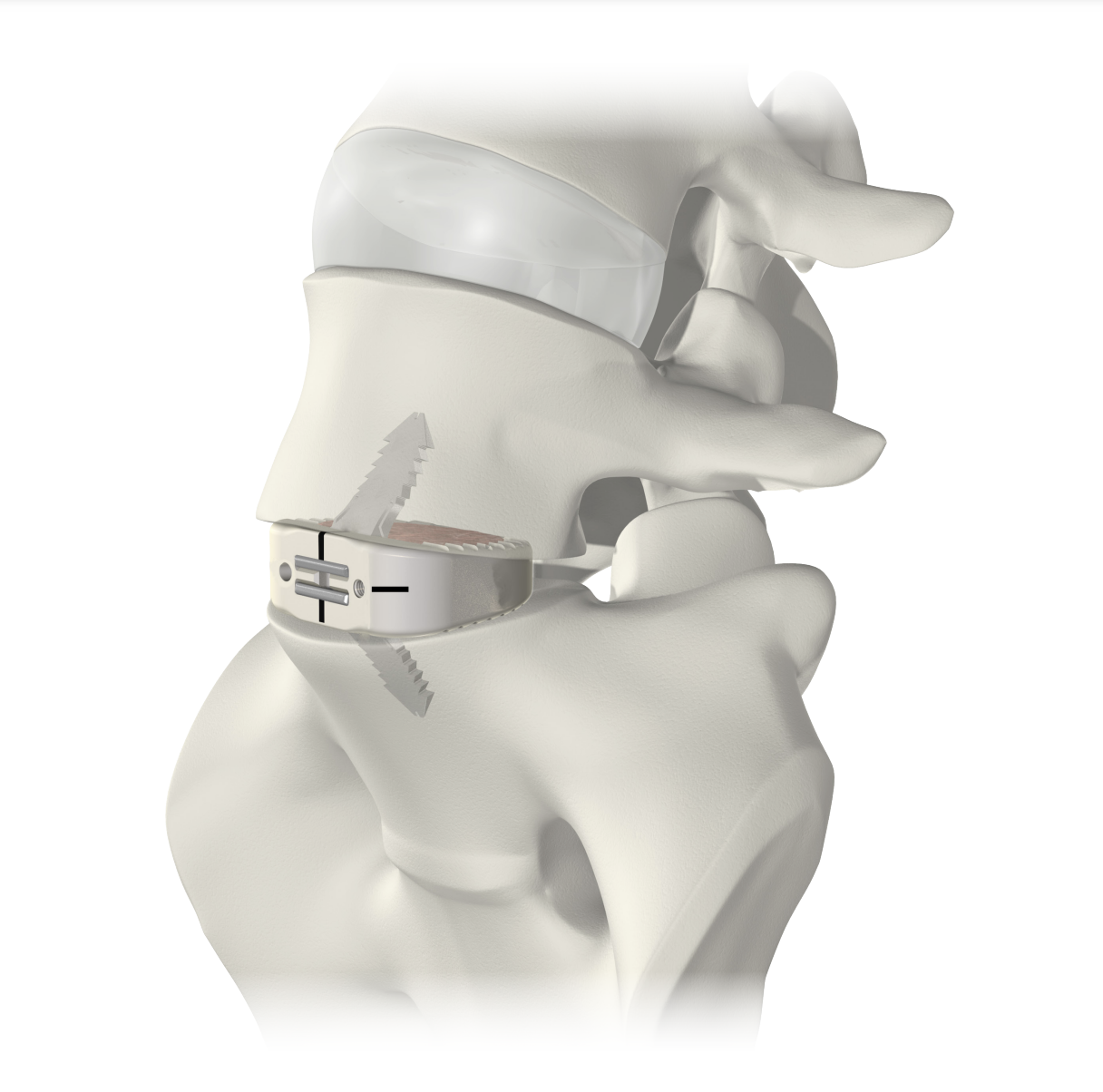Cutting edge spinal interventions.
Your lumbar solutions.
Decide with confidence.
5 questions you should ask.
Lumbar motion preserving technology. Alternatives to spinal fusion.
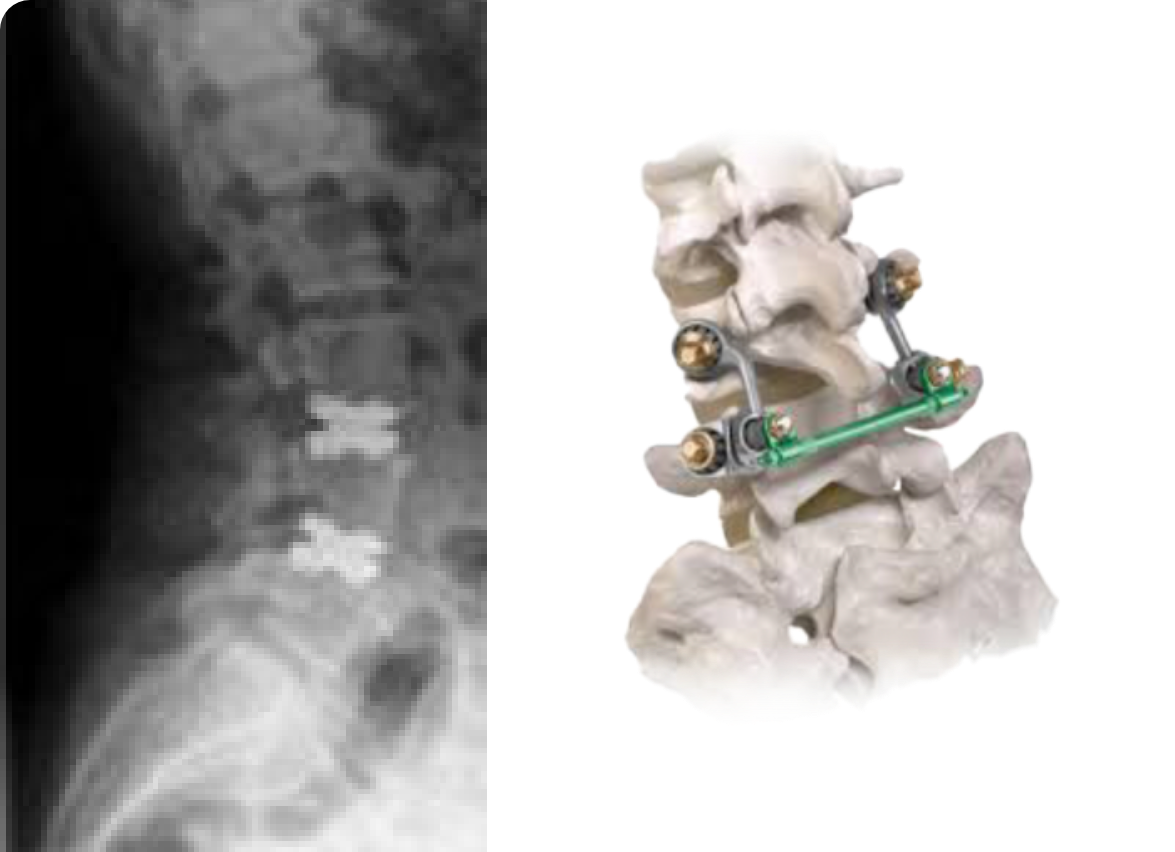
Left: Implanted Triumph discs at L3/4 and L4/5
Right: Additional facet joint replacement with Acadia

ONZ neurosurgeon Dr. Bernd Illerhaus about ProDisc L .
ProDisc L offers a motion-preserving alternative to traditional spinal fusion. The advantages of ProDisc L include preserving natural motion in the spine, reducing the risk of adjacent segment degeneration, and providing long-term relief from chronic back pain. It allows for flexibility and stability while maintaining spinal alignment. The implant's design is based on extensive research and clinical studies, ensuring its efficacy and durability. ProDisc L enables patients to regain mobility, improve their quality of life, and potentially avoid the limitations associated with spinal fusion surgery.
More about ProDisc L
Prodisc L, developed by Centinel Spine, is an innovative spinal implant designed to address the challenges associated with degenerative disc disease in the lumbar spine. This advanced implant offers numerous advantages over traditional treatments, significantly improving the quality of life and spinal function for patients.
One of the primary advantages of Prodisc L is its unique ability to preserve natural spinal motion. Unlike fusion surgeries that restrict movement between affected vertebrae, Prodisc L mimics the structure and function of a healthy intervertebral disc, allowing for continued flexibility. This not only maintains the natural range of motion but also reduces the risk of adjacent segment degeneration, a common complication of fusion procedures.
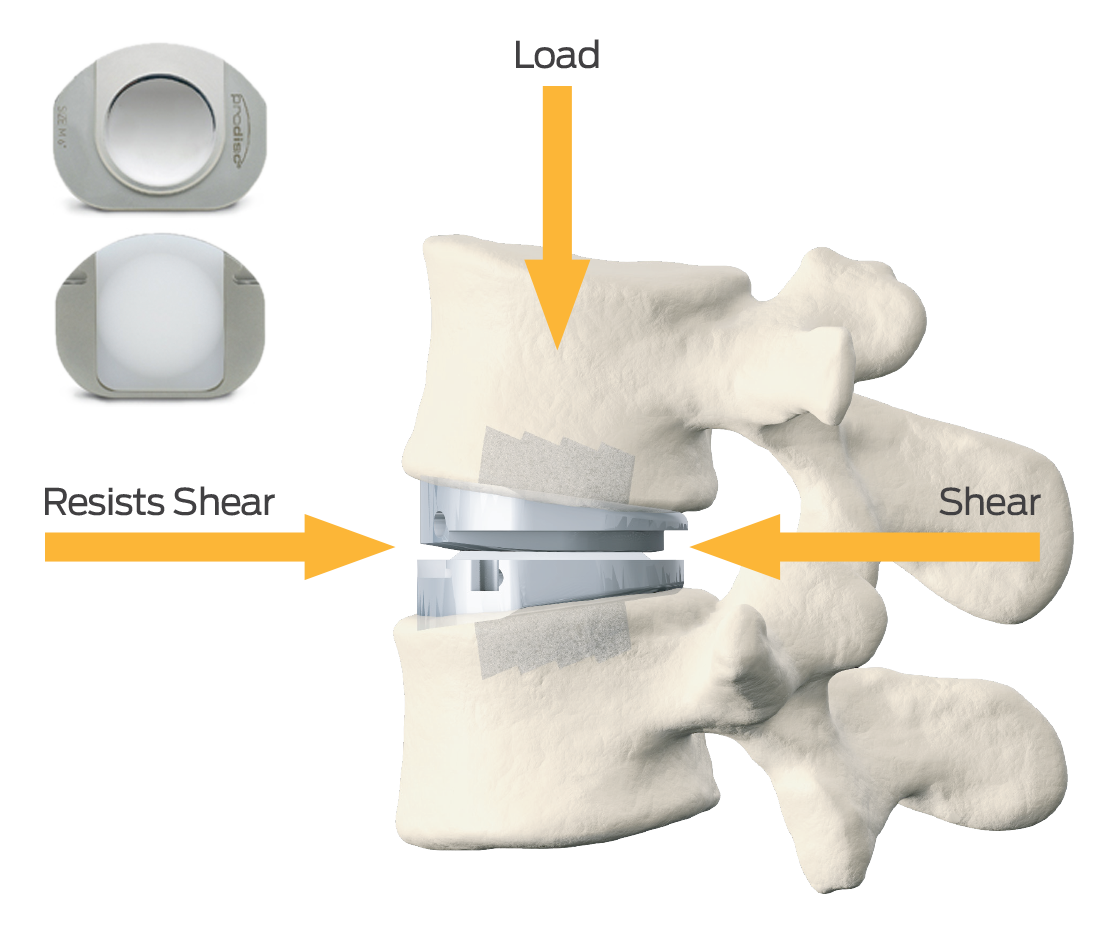
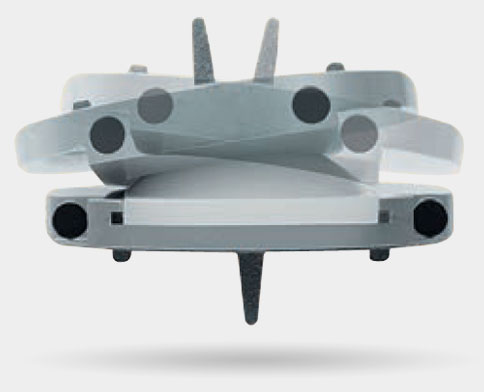
Prodisc L stands out for its use of high-quality, biocompatible, and durable materials. The implant's components are designed to withstand the mechanical demands of the spine, ensuring long-term stability and reducing the likelihood of implant failure. This durability instills confidence in patients, as they can rely on the implant's longevity without concerns about potential revision surgeries or the need for additional interventions in the future.
Another advantage of Prodisc L is its minimally invasive surgical approach. By utilizing small incisions during the implantation procedure, tissue disruption is minimized, resulting in reduced blood loss and faster recovery compared to traditional open surgeries. Patients benefit from shorter hospital stays and a quicker return to their regular activities, enabling them to resume their normal lifestyles sooner.
Furthermore, Prodisc L offers individualized treatment options tailored to meet the specific needs of each patient. The implant is available in various sizes, allowing surgeons to select the most suitable size for a patient's anatomy. This personalized approach ensures a proper fit and optimal alignment, leading to improved clinical outcomes and enhanced patient satisfaction.
Clinical results have demonstrated the effectiveness of Prodisc L in providing pain relief and restoring spinal function. Patients have reported significant reductions in pain, improved mobility, and an overall enhancement in their quality of life. The ability of Prodisc L to preserve motion, coupled with its durability and individualized treatment options, positions it as an excellent choice for patients seeking a long-lasting solution to their lumbar degenerative disc disease.
In summary, Prodisc L offers multiple advantages over traditional treatments for degenerative disc disease in the lumbar spine. Its ability to preserve natural spinal motion, durable construction, minimally invasive approach, and personalized treatment options contribute to improved clinical outcomes and patient satisfaction. By choosing Prodisc L, patients can regain spinal function, experience pain relief, and enjoy an enhanced quality of life.
Alternative procedures and methods.
HPS™ 2.0 Hybrid Performance System
HPS ™ 2.0 is a universal system for spinal stabilization. It offers the possibility of multisegmental fusion with the option of dynamic stabilization of the cranial segment. The aim is to shorten the fusion distance and thus reduce the risk of degeneration of the connecting segments. The dynamic connector controls the movement of the spine in all directions. Allowed mobility in flexion, extension and in lateral tilt, while translation and axial rotation are reduced to a minimum. The ability to make controlled axial length adjustments allows for a change in pedicle spacing of just under 2 mm. This allows the system to dampen axial forces, relieve facet joints and intervertebral discs, and maintain the physiological pivot point of the index as well as the connecting segments.
The dynamic HPS ™ 2.0 connecting element - Controlled range of motion and physiological quality of movement.
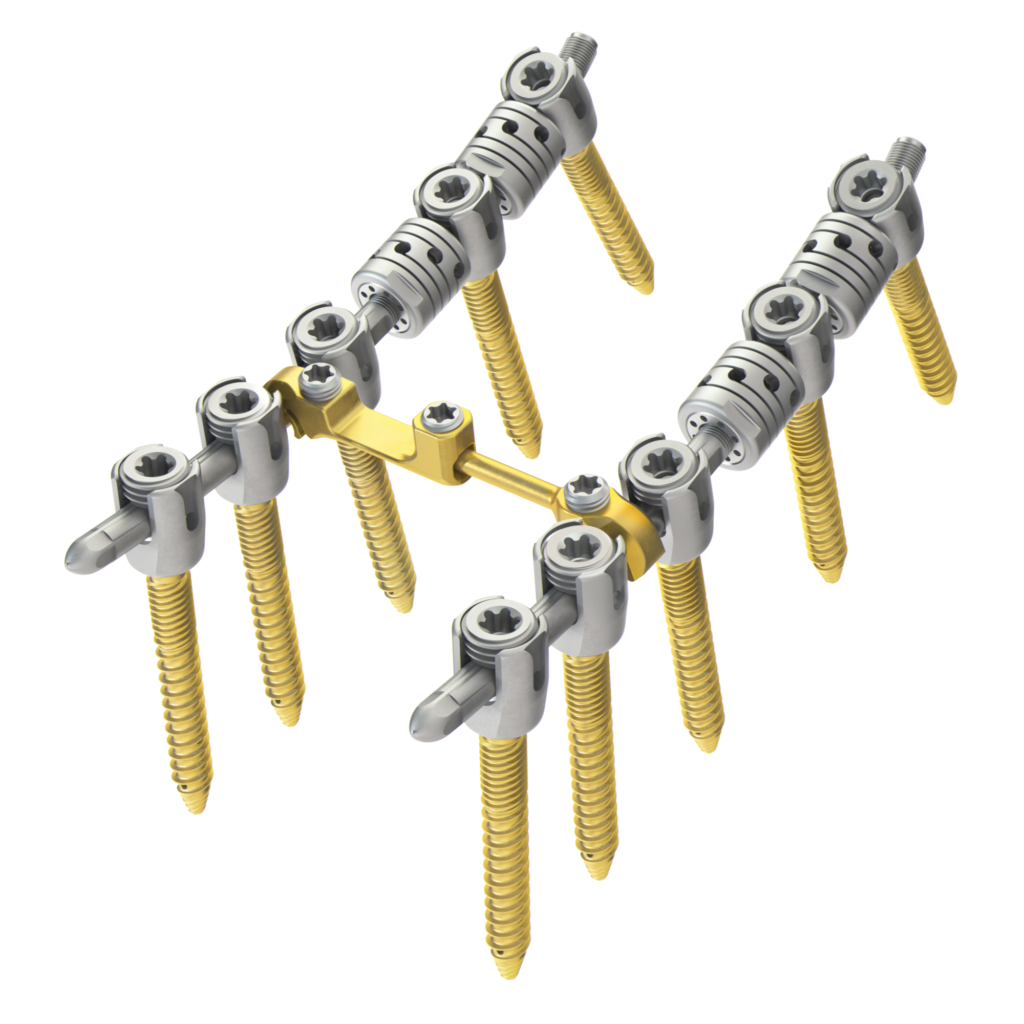
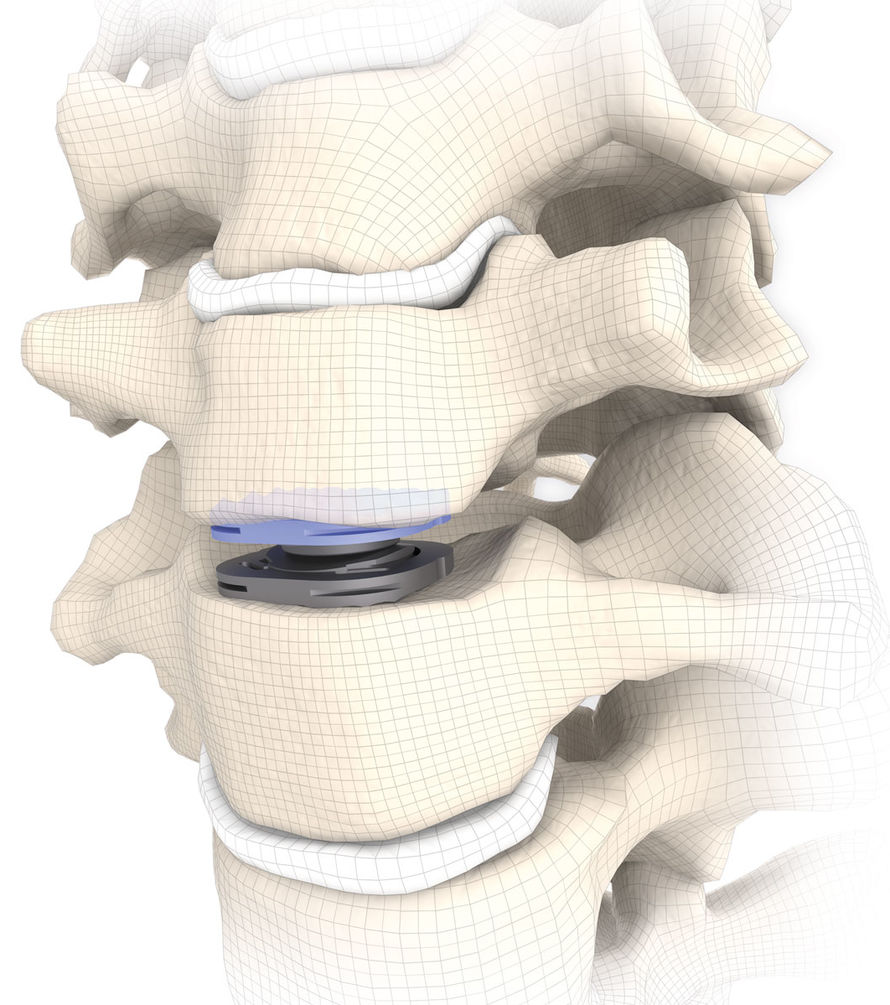
Signus Spine
The lumbar spine is located in the lower back and is made up of five vertebrae that are stacked on top of each other. This part of the spine is responsible for supporting the weight of the upper body and allowing us to move our hips and legs.
Signus Spine is a surgical technique that uses a small incision to access the lumbar spine. Through this incision, we can insert a special tool that allows us to remove damaged or diseased tissue in the spine.
The procedure is done under anesthesia, so you will be asleep during the surgery. The small incision means that there is less scarring, less pain, and a shorter recovery time than with traditional open surgery.
The benefits of Signus Spine include a quicker return to daily activities and improved outcomes. It is important to note that this technique may not be suitable for everyone, and we will need to evaluate your specific condition to determine if it is the best option for you.
I hope that helps you understand a little more about Signus Spine and how it can be used to treat lumbar spine problems. If you have any further questions or concerns, please don't hesitate to ask.
ROI-A
ROI-A stands for "Reactor of Implants with Angular Stability." The ROI-A surgical technique is an approach to lumbar spine surgery that involves placing small implants in your spine to provide support and stability. One of the key benefits of ROI-A is that it minimizes the amount of trauma to your muscles and tissues, which can result in less pain and a faster recovery time.
In comparison, the Signus Spine method also involves placing implants in your spine, but it is a more traditional open surgical technique. This means that the incision is larger and more invasive, which can result in more pain and a longer recovery time.
The HPS 2.0 method, on the other hand, is a completely different type of surgery. It involves removing a portion of the vertebral bone in order to decompress the spinal canal and relieve pressure on the nerves. This technique can be effective for certain types of spinal conditions, but it is more invasive than the ROI-A technique.
Overall, the main differences between these techniques are the level of invasiveness and the specific approach to treating the spinal condition. While each technique has its own benefits and drawbacks, as a neurosurgery specialist, I would recommend the ROI-A technique as a option that can provide effective support and stability to your spine with less pain and faster recovery times.
